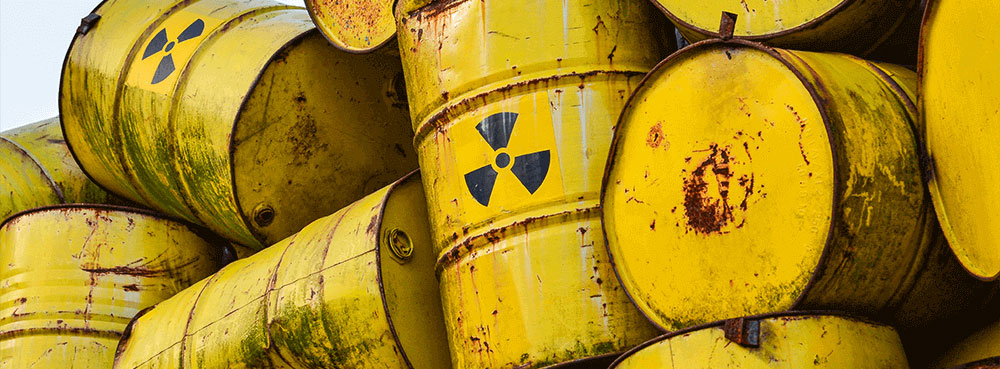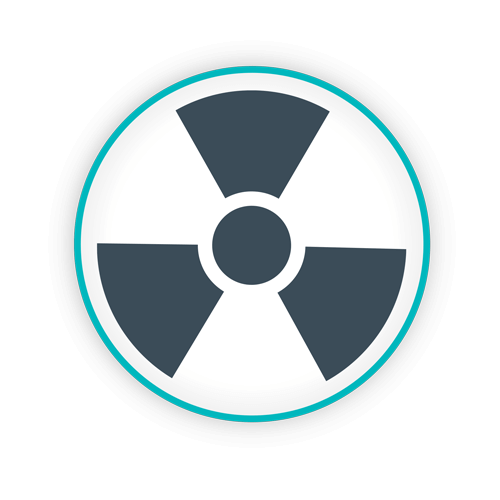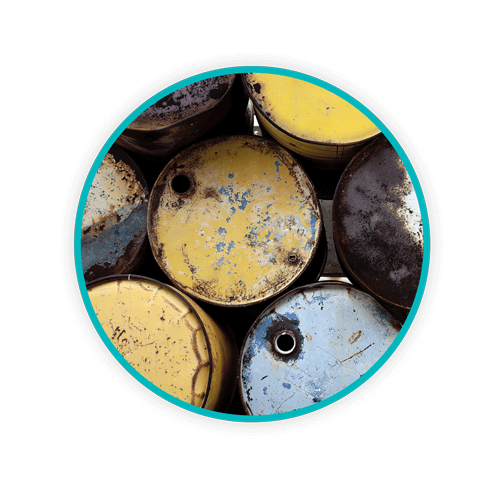Radioactive Waste Management in Hospitals

Hospitals provide a number of technologies that generate radioactive waste, so proper identification, segregation, and management of such waste is essential. Every staff member in such an environment should be able to identify such waste to protect not only themselves, but patients, visitors, and housekeeping and/or janitorial staff from exposure.
Radioactive medical waste is a relatively common waste stream found in many hospitals today. Can your employees define radioactive waste? And how do they dipose radioactive waste generated in your hospital?
TOPICS WE WILL COVER:
1 / What is radioactive waste?
2 / Waste management of radioactive waste in hospitals
3 / Handling and storage of radioactive wastes in hospital environments
4 / Radiation safety in hospitals
5 / Radiation safety in hospitals
What is radioactive waste?
Radioactive waste, at its most basic description, is deemed hazardous because it emits radioactive particles. If these particles are not properly managed, they can pose a risk to not only human health, but to the environment.
 Radioactive medical waste is most commonly produced or generated by nuclear medicine technologies, radiation procedures, or other oncology treatment options, as well as scans such as positron emission tomography (PET) and combinations of PET scans with computed x-ray tomography (CT) scans. Each of these procedures is composed of a number of steps or processes that have the potential to leave behind some type of radioactive waste.
Radioactive medical waste is most commonly produced or generated by nuclear medicine technologies, radiation procedures, or other oncology treatment options, as well as scans such as positron emission tomography (PET) and combinations of PET scans with computed x-ray tomography (CT) scans. Each of these procedures is composed of a number of steps or processes that have the potential to leave behind some type of radioactive waste.
Radioactive elements are called radionuclides. These elements emit radiation at specific rates that are measured in half-life. The radioactive half-life of any radionuclide is defined as the time required for half of the radioactive atoms in that radionuclide to decay. Some radionuclides have a half-life of a few seconds while others have a half-life that can last thousands of years.
In a hospital environment, radioactive waste typically comes from the radiation therapy department or nuclear medicine department of the medical facility. Radioactive waste comes in many different forms and can include something like a piece of medical equipment that has been contaminated with a trace amount of a specific isotope, to clothing worn by the patient or the personal protective equipment (PPE) worn by health care providers or technicians. Radioactive waste can also come from biological materials, also known as pathological waste.
Radiation sources can run the gamut from pellets inserted into the body that destroy tumors to techniques that are used to determine prognosis through the injection of radioactive antigens into the bloodstream.
Healthcare providers and patients must also be aware that even fluids and body parts that have come into contact with a radioactive substance, such as urine, can become radioactive pathological waste.
Supplies such as packaging materials, wipes, gowns, and other fluids may also be contaminated with radioactive wastes.
Radioactivity of such materials used in the body typically have a short half-life in order to avoid harm to healthy tissues in the body. This is beneficial not only for the patient, but in the potential of the radioactive component in the material becoming less dangerous to store and dispose of. Options for storage and disposal vary widely depending on the radioactive component used in a variety of processes.
Waste management of radioactive waste in hospitals
Radioactive wastes are considered hazardous pharmaceutical waste. The Environmental Protection Agency (EPA) provides information regarding radioactive waste that includes not only radioactive waste produced by healthcare technologies and procedures but other industries. In general scenarios, radioactive waste that originates from hospitals or medical research facilities is typically defined as low-level waste. Per the EPA, a low-level or low-activity radioactive waste typically contains “very small” concentrations of radionuclides.
According to the EPA, radioactive wastes that contain “very small” concentrations of radionuclides are typically in small enough amounts that the more stringent recommendations for handling higher activity radioactive materials are not always required. Unfortunately, guidelines regarding regulations for the disposal of radioactive waste are fairly inconsistent and depend on the origin of the waste.
Handling and storage of radioactive wastes in hospital environments
A number of guidelines for the handling and disposal of radioactive waste used in hospitals can also vary slightly from state to state and department such as nuclear medicine, radiology processes utilizing PET scans, or even radiation oncology specialties.
- Types and examples of radioactive waste can range from contaminated syringes and materials to unused radioactive seeds that are commonly found in implant or pellet procedures.
- Segregation of radioactive waste is essential. Such waste is to be placed into a clearly marked container. Any sharps and needles should also be placed into a separate sharps container for disposal.
- Never discard any potentially contaminated item or radioactive material into a “regular” trashcan.
- No housekeeping staff should dispose of radioactive waste! Rather, radioactive waste is to be secured against the potential of unauthorized removal and must always be labeled in a way as to restrict removal except by authorized personnel.
- In hospitals where radioactive materials are used, a radiation safety office or similar personnel are responsible for the collection and removal of such waste to a specific location.
-
In some cases, such as a facility that routinely provides PET scans, radioactive waste may be allowed to decay naturally on-site (as most have a relatively short half-life) and must be accompanied by compliant and accurate records.

Radioactive materials naturally “decay” or lose their radioactivity potential over time. Some radioactive materials have a half-life of anywhere from seconds to hours, while different isotopes will have different half-lives that last much longer. For example[1]:
- The half-life of Iodine-131 is approximately eight days
- Fluorine-18 has a half-life of 110 minutes
-
Cobalt-60 has a half-life of 5.271 years
In the hospital environment, foot-operated disposal/collection bins lined with disposable polythene is recommended for the collection of solid radioactive waste. Some hospitals have appropriate facilities and permission to incinerate some radioactive waste.
Radioactive waste that contains different isotopes with different half-lives is to be segregated into separate waste collection bags and bins. Those containers must be marked with the name of the isotope, the type of radioactive activity (low-level, medium-level, high-level), and the date it was first monitored.
Today, incineration and concentration/containment of radioactive waste processes are rarely used. The more common radioactive disposal processes include delay/decay processes. Refer to hospital, state, and federal guidelines regarding radioactive waste disposal of items that can include smaller items such as vials, cotton swabs, and syringes.
Low-level radioactive waste from a hospital typically has a short half-life and can be stored for a relatively short time before disposal. That range is about 10 half-lives of the isotope or the point where only 0.1% of the radioactivity remains.
Radioactive waste naturally decays over time to a point where it is no longer hazardous.
Radiation safety in hospitals
Hospitals throughout the country that offer radiation or nuclear services will often have an Office of Radiation Safety, who are responsible for maintaining as well as administering high-level safety protocols. They are also responsible for the maintenance and collection of records regarding waste, compliance, audits, and permits along with potential shipping and safe transportation of radioactive materials.
Even low levels of radioactive waste from hospitals should be packaged and transported according to federal regulations. Labels, container markings, and packaging must clearly define contents, codes, and symbols.
Daniels Health promotes safe management of radioactive waste
Safe use, collection, storage, and disposal of radioactive biomedical waste is essential. With decades of experience in safe and compliant healthcare waste disposal processes, contact us for information regarding safe and effective products and services. Our resources focus on safety and compliance – for you, your employees, and the environment. Call us today for your radioactive waste disposal needs.
